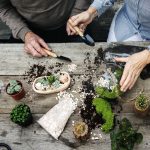Urban spaces are not typically thought of as hotbeds for biodiversity, but with careful planting and maintenance, they can become havens for a variety of species. Pollinators such as bees play a critical role in preserving the health of our ecosystems, but often struggle to find enough food in our concrete jungles. However, certain native UK wildflowers are especially adept at attracting and supporting these pollinators. Through careful data analysis and modelling, scientists have determined which of these plants are most effective in promoting pollinator health in urban environments.
The Importance of Native Wildflowers for Pollinators
Before diving into the specific plants that are most beneficial to pollinators, it’s crucial to understand why native wildflowers are so important. Native plants have, over centuries, formed symbiotic relationships with local pollinator species. These relationships, often involving the plant offering nectar or pollen in return for pollination, are critical to both parties’ survival.
A lire en complément : How do changes in UK agricultural pesticide regulations specifically impact butterfly migration patterns?
Scientific studies conducted by universities worldwide have consistently found that native plants are more effective at attracting pollinators than non-native species. This is often because the native plants produce the exact type of nectar or pollen the local pollinators need. Moreover, native plants typically bloom at the same time the pollinators are active, ensuring a steady food source.
Data Collection Methods for Pollinator-Plant Interactions
To identify which native plants are most beneficial to pollinators, scientists need to gather a wealth of data. These data collection methods typically involve creating a table of the various plant and pollinator species present at the sampling site.
En parallèle : How can UK coastal cities design lighting to minimize disruption to sea turtle hatchlings?
One popular method is floral unit sampling, where the number of flowers (also known as floral units) open at any one time is recorded. This gives an indication of the plant’s attractiveness to pollinators. In addition, the pollinators visiting the flowers are carefully observed and recorded. This data, combined with the floral unit information, can be used to create a model of the plant-pollinator interactions.
Another approach is pollen analysis. With this method, pollinators are carefully sampled to determine what types of pollen they are carrying. This can give more direct evidence of which plants the pollinators are visiting.
Most Effective Native Wildflowers for Pollinator Health
The data gathered on wildflowers and pollinators can reveal some interesting trends. For example, the annual total of visits by bees to different types of flowers can indicate which plants are most attractive to these important pollinators.
Several native UK wildflowers have been found to be especially effective at supporting pollinator health in urban settings. The oxeye daisy, with its large, open flowers and plenty of pollen and nectar, is a favourite of many bee species. Meanwhile, the red clover’s small, tubular flowers are perfect for long-tongued bees and butterflies.
Another standout is the field scabious, which boasts a long flowering period, providing a consistent food source for pollinators throughout the summer. Furthermore, the common knapweed, with its high nectar production, is a magnet for a variety of pollinators, including bees, butterflies, and beetles.
The Role of Urban Green Spaces in Pollinator Health
While individual plant species can contribute significantly to pollinator health, the layout and maintenance of urban green spaces also play a crucial role. A diverse array of plants, offering a range of different flower types, can attract a broader spectrum of pollinator species. This biodiversity can enhance the overall health of the pollinator population.
Urban green spaces should ideally include a mix of flowering plants that bloom throughout the year, providing a constant food source for pollinators. Also, these spaces should minimize the use of pesticides, which can harm pollinators.
The Potential of Citizen Science in Supporting Pollinator Health
Citizen science projects can greatly contribute to the understanding and preservation of pollinator health in urban settings. These projects involve members of the public collecting data on their local environment, often in collaboration with a university or research institute.
For example, a citizen might record which types of pollinators they see visiting their garden flowers or which plants seem to be most attractive to bees. This information can then be used to create models of pollinator behaviour and preferences, contributing to the overall understanding of how to best support these crucial species in an urban environment.
In conclusion, while urban settings may seem inhospitable to wildlife, careful planting and maintenance of native UK wildflowers can create vital habitats for our precious pollinators. By understanding the needs of these species and adapting our green spaces accordingly, we can contribute to the preservation of our planet’s biodiversity, even in the heart of the city.
Strategies for Increasing Floral Resources in Urban Areas
Adopting suitable strategies can enhance the availability of floral resources in urban areas, thereby supporting pollinator health. The first step is promoting the use of native wildflowers in public and private gardens, parks, and other green spaces. These flowers not only attract a diverse range of pollinators but also add to the species richness of the urban landscape.
Another effective strategy is the use of seed mixes that consist of a variety of native wildflowers. These seed mixes can be easily distributed, and they promote the growth of a diverse range of flowers species. The chosen mix should ideally include plants that bloom at different times to ensure a consistent supply of nectar and pollen.
Creating a network of green spaces across urban areas can offer consistent and widespread floral resources for pollinators. Think of this as creating a ‘green corridor’ through the city, allowing pollinators to move freely and find food no matter where they are.
The maintenance of these spaces is also crucial. Reducing or eliminating the use of pesticides, and ensuring that each individual plant has the chance to grow and thrive, is vital. The focus should be on providing a rich diversity of floral abundance to support a wide variety of pollinators.
Citizen Science and Pollinator Health: A Collaborative Approach
The role of citizen science in supporting pollinator health cannot be underestimated. Find articles and resources from your local biology university or research institute can provide you with the tools and guides to start your own citizen science project. You can contribute to the data collection process by documenting the number of flowers in your garden, the types of pollinators visiting, and the frequency of their visits.
Remember to pay attention to pollen grains, as they can provide valuable insights into which flowers are most favoured by the pollinators. Consider sharing your findings on a separate window or platform where other citizen scientists can access and learn from them.
By actively participating in these projects, each citizen scientist plays a pivotal role in the preservation and improvement of our urban ecosystems. Your efforts can help increase the understanding of pollinator behaviour, preferences, and needs, which in turn can inform future strategies for promoting pollinator health.
Conclusion: Wildflowers and Pollinators – Key to Urban Biodiversity
To conclude, by understanding the intricate relationships between pollinators and native wildflowers, we can apply strategies that encourage the growth of these plants and, consequently, support the health of pollinator populations in urban settings. This symbiotic relationship is essential to maintaining species richness and enhancing biodiversity, even within our concrete jungles.
The potential of urban areas to support pollinators is vast, and it’s up to us to tap into it. Creating and maintaining green spaces, enhancing floral resources, and engaging in citizen science are all ways we can contribute to this effort. It’s a collective responsibility that extends beyond scientists and researchers. From city planners to homeowners, we all have a role to play in preserving the health of our ecosystems and, ultimately, our planet. Together, we can ensure that our cities become havens for pollinators, rather than barriers to their survival.











